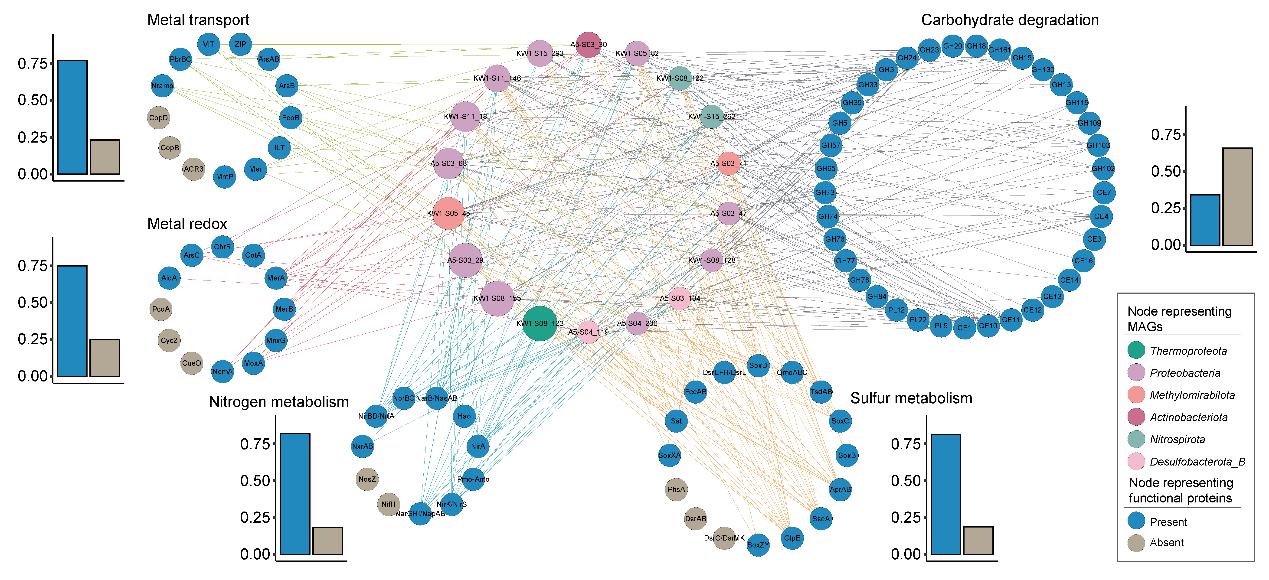Study Reveals Metabolic Capacities of Microorganisms in Ferromanganese Nodule Sediments
Ferromanganese nodule-bearing deep-sea sediments harbor unique conditions characterized by high iron concentration and low degradable nutrient levels, which pose challenges to the survival and growth of most microorganisms. However, little is known about the functional capacities of the communities adapted to these unique habitats.
Recently, the research team led by Prof. SHA Zhongli from the Institute of Oceanology of the Chinese Academy of Sciences (IOCAS) has made significant progress in the adaptability of microorganisms inhabiting metal-rich ferromanganese nodule sediments.
The study was published in Microbiome (IF=15.5) on July. 25.
This study reveals extensive redundancy across taxa for pathways of metal resistance and transformation, the highly diverse mechanisms used by microbes to obtain nutrition, and their participation in various element cycles in these unique environments.
Specifically, the results suggest that within these metal-rich sediment environments, heterotrophic and chemolithoautotrophic microorganisms had developed mechanisms of resistance to heavy metals including metal efflux (Mn, Cu, As, and Pb), adsorption uptake (Fe, Cu, Zn, Pb, and Hg), and metal biotransformation by enzymatic redox (Mn, Fe, Cu, As, Cr, and Hg).
"Utilization of inorganic nutrients by redox reactions (rather than organic nutrient metabolism) is a major adaptive strategy used by microorganisms to support their survival in the ferromanganese nodule sediments," said Associate Prof. ZHANG Dechao, first author of the study.
"Our research has provided the first comprehensive study of the metabolic capacities of microorganisms in ferromanganese nodule sediments," said Prof. SHA, corresponding author of the study. "Investigation of core metabolic genes provides the first evidence for the roles of these distinct microbes in metal, nitrogen, and sulfur cycling."

Fig. 1 Overview of the metabolic functions of dominant microbial components in deep-sea ferromanganese nodule sediment fields.

Fig. 2 Proposed microbial-dominated ecological functions in deep-sea ferromanganese nodule sediment fields.
Dechao Zhang?, Xudong Li?, Yuehong Wu, Xuewei Xu, Yanxia Liu, Benze Shi, Peng Yujie, Dadong Dai, Zhongli Sha#, Jinshui Zheng#. (2023). Microbe-driven elemental cycling enables microbial adaptation to deep-sea ferromanganese nodule sediment fields. Microbiome.
(Text by ZHANG Dechao)
Media Contact:
ZHANG Yiyi
Institute of Oceanology
E-mail: zhangyiyi@qdio.ac.cn
(Editor: ZHANG Yiyi)